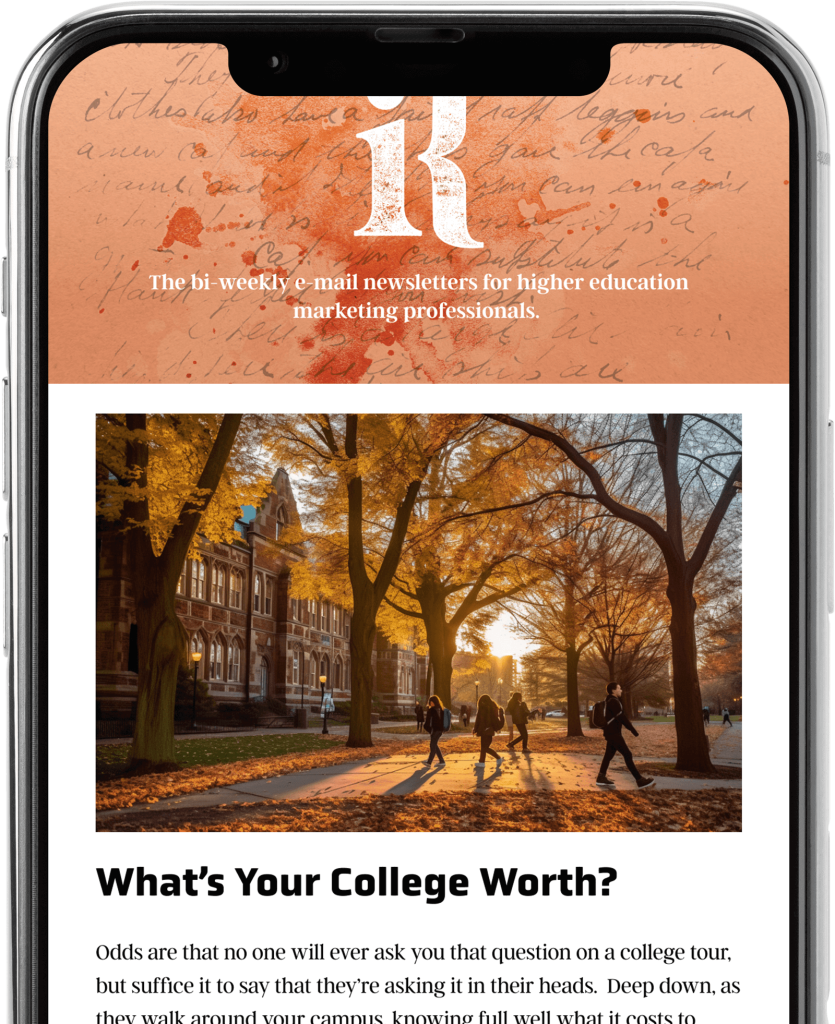Higher Education Marketing
Marketing Myopia in Higher Education

Along the lines of infusing values into marketing, broadening your marketing efforts to focus more on customer needs and aspirations (instead of mere product attributes and features) can be powerful. To explain this, the late Harvard Business School Professor Theodore Levitt coined the term “marketing myopia” to refer to the tendency of organizations to be short-sighted or nearsighted when it comes to thinking about what they deliver to customers. Said differently, they focusing on selling products instead of understanding and fulfilling needs.
This “myopia,” also defined as lacking in imagination, foresight, or intellectual insight, was the subject of Levitt’s 1960 Harvard Business Review article entitled Marketing Myopia. The author challenges readers to consider what business they are truly in, which is often a bit different than what they might initially think. One of Levitt’s most famous articulations of this myopia, paraphrased, is that “people don’t buy a drill, they buy a hole in the wall.” His point is that people buy outcomes (the hole in the wall) not the product or feature (the drill).
Amtrak operates trains, but it’s really in the business of transporting people safely and comfortably. Lululemon sells apparel and personal accessories, but it’s actually in the business of helping active adults live active lifestyles that balance professional, leisure, and fitness priorities. Your school teaches classes and awards degrees, certainly, but what does it really do?
Marketing Myopia Considerations in Higher Education
When it comes to your institution, what do your marketing materials actually say that you are selling and delivering? Are you focused on selling degrees or outcomes? Are you touting the fact that your MBA program features hybrid programming more than the idea that you’re preparing students for today’s workforce? Is your messaging speaking more to graduation rates or degree of impact that your graduates have on the world? Thinking through these questions may lead you to some interesting (and more attractive) opportunities when it comes to resonating with prospects.
Marketing myopia has been around for decades. Years later, marketing expert Seth Godin challenges us to think far beyond this characterization of marketing myopia in his 2020 book This is Marketing. Godin encourages us to go further. Higher.
“No one wants a hole. What people want is the shelf that will go on the wall once they drill the hole. Actually, what they want is how they’ll feel once they see how uncluttered everything is, when they put their stuff on the shelf that went on the wall…They also want the satisfaction of knowing they did it themselves. Or perhaps the increase in status they’ll get when their spouse admires the work. Or the peace of mind that comes from knowing that the bedroom isn’t a mess, and that it feels safe and clean. People don’t want to buy a [drill]. They want to feel safe and respected.”
Levitt and Godin call our marketing further and higher by thinking long and hard about what we’re actually delivering to our students. We deliver a product but why do our customers actually buy it? Our customers buy that product but what do they really hope to gain from it? It has a price but what value are we actually transferring? In short, what’s the point? Exploring these questions will lead you toward a more resonant message about your institution.
Godin’s allusion to status is also a powerful notion we should not ignore, regardless of how uncomfortable that is. Degrees and the institutions that award them are very much in the status business. While degrees come with skills, relationships, experiences, and a wealth of knowledge, they also serve as a powerful calling card in our society. And the better we develop our institutional brands, the stronger that calling card becomes.
What business is your institution truly in?
Like what you're reading?
Subscribe to our newsletter to get the latest insights in Higher Education and thought leadership.


